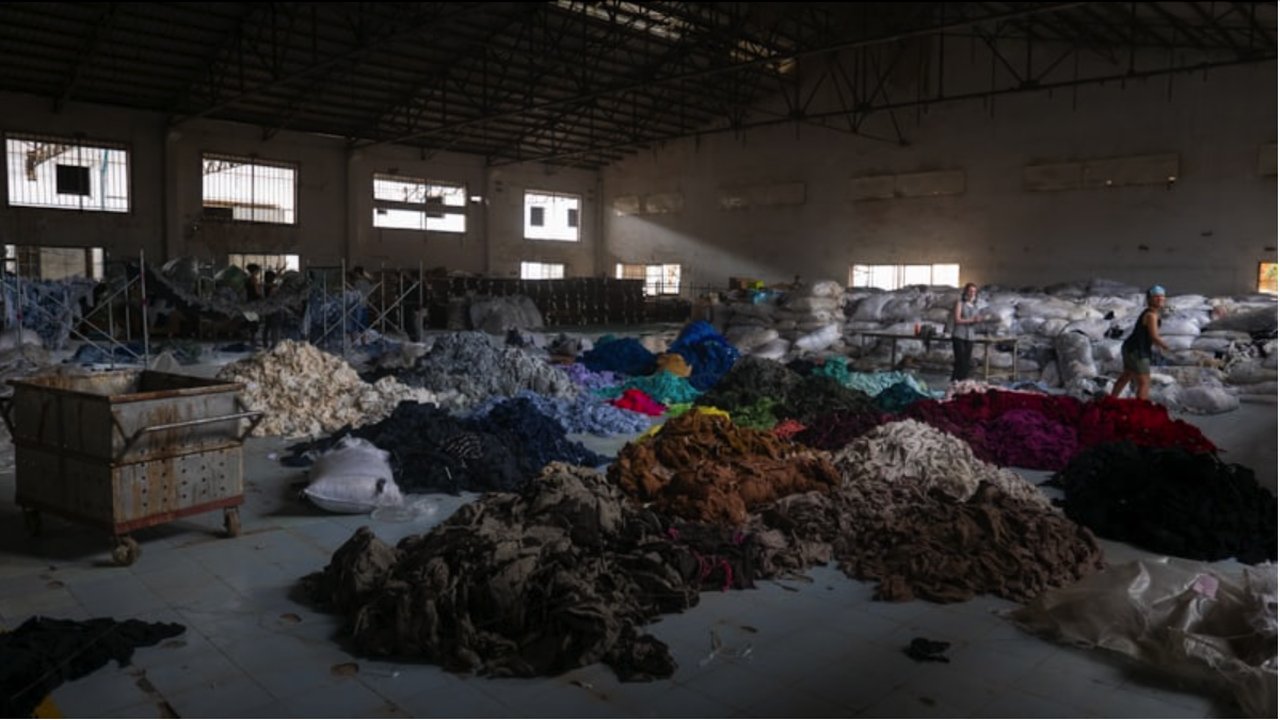 With the UK facing a potential crisis in textile recycling, the industry is at a critical juncture. As clothing consumption soars, the lack of a robust collection system threatens to unravel the sector. The National Textile Recycling Infrastructure Plan, spearheaded by UK Fashion and Textile Association (UKFT), aims to guide the country towards a circular textile economy by 2035. This comprehensive framework outlines key recommendations to address the pressing challenges and transition to a sustainable future. From policy drivers to infrastructure development, the plan sets a clear path for industry stakeholders to navigate the complexities of textile waste management and embrace a circular approach.
With the UK facing a potential crisis in textile recycling, the industry is at a critical juncture. As clothing consumption soars, the lack of a robust collection system threatens to unravel the sector. The National Textile Recycling Infrastructure Plan, spearheaded by UK Fashion and Textile Association (UKFT), aims to guide the country towards a circular textile economy by 2035. This comprehensive framework outlines key recommendations to address the pressing challenges and transition to a sustainable future. From policy drivers to infrastructure development, the plan sets a clear path for industry stakeholders to navigate the complexities of textile waste management and embrace a circular approach.
Urgency of Transition to Circular Textile Economy
The urgency to transition to a circular textile economy in the UK has never been more apparent, with the looming threat of the textile sector rupturing under the weight of increasing clothing consumption and inadequate recycling infrastructure. The National Textile Recycling Infrastructure Plan introduced by the UK Fashion and Textile Association (UKFT) serves as a beacon of hope in addressing this critical issue. By setting a target of achieving a robust circular textile economy by 2035, the plan outlines a comprehensive strategy to revamp the industry's approach to textile waste management. With the potential annual costs projected to reach £200 million by 2035 if the current trajectory persists, the imperative for immediate action is clear.
The plan's emphasis on key pillars such as infrastructure development, market capacity enhancement, skills and workforce training, and technology integration underscores the multifaceted nature of the transition required. By engaging stakeholders across the textile value chain, including local authorities, collectors, sorters, recyclers, and manufacturers, the plan aims to create a collaborative ecosystem that can drive sustainable change. The call for systemic policy changes and the implementation of an extended producer responsibility scheme highlights the necessity for regulatory interventions to incentivize sustainable practices within the industry. As the textile sector faces a defining moment, the proactive measures outlined in the plan offer a roadmap towards a more resilient and environmentally conscious future.
Role of Policy Drivers in Promoting Circular Textile Economy
Policy drivers play a pivotal role in shaping the trajectory of the textile industry towards circularity, as highlighted in the National Textile Recycling Infrastructure Plan. The proposal for a mandatory extended producer responsibility scheme and eco-design requirements reflects a proactive approach to incentivize brands and manufacturers to prioritize recyclability and recycled content in their products. Without such regulatory frameworks, the plan warns of a stagnation in private investment and the development of essential recycling infrastructure, hindering the sector's progress towards sustainability. By enacting policies that align economic incentives with environmental objectives, the plan aims to create a conducive environment for innovation and investment in circular textile solutions.
The delineation of short-term and long-term policy priorities within the plan underscores the phased approach required to drive systemic change in the textile recycling landscape. In the initial phase, the focus lies on laying the foundation through policy interventions and infrastructure development, setting the stage for the industry's transition. As the plan progresses towards the second phase, the emphasis shifts towards scaling up existing initiatives and fostering industrial expansion. By fostering a regulatory environment that supports sustainable practices and incentivizes circularity, policymakers can catalyze the transformation of the textile sector and pave the way for a more sustainable future.
Innovation and Technology Integration in Textile Recycling
Innovation and technology integration are central to the success of transitioning to a circular textile economy, as outlined in the National Textile Recycling Infrastructure Plan. By leveraging advancements in automated sorting systems and expanding domestic fiber-to-fiber recycling infrastructure, the plan envisions a future where textile waste management is efficient, optimized, and environmentally friendly. The proposal for a national textile recycling hub equipped with Advanced Textile Sorting Processes (ATSPs) represents a significant step towards enhancing the recycling capacity within the UK. With the potential for a £277 million investment in combined developments, including substantial contributions to the UK economy, the plan underscores the economic opportunities inherent in embracing sustainable textile recycling practices.
The focus on diverting post-consumer textiles from residual waste and redirecting non-reusable textiles towards domestic recycling solutions highlights the innovative strategies needed to address the challenges of textile waste management. By emphasizing the need for increased efficiency in textile waste collection and recycling processes, the plan aims to create a more circular and resource-efficient textile industry. Through continuous innovation and technological advancements, the sector can not only reduce its environmental footprint but also unlock new avenues for economic growth and job creation.
Conclusion
As the textile industry in the UK stands at a pivotal juncture, the National Textile Recycling Infrastructure Plan spearheaded by UK Fashion and Textile Association (UKFT) emerges as a beacon of hope towards a circular textile economy by 2035. With a focus on infrastructure development, policy drivers, and innovation, the plan charts a comprehensive pathway for industry stakeholders to address the pressing challenges of textile waste management. The urgency for immediate action is underscored by the potential annual costs of £200 million by 2035, emphasizing the critical need to embrace sustainable practices. By aligning policy incentives with environmental objectives and leveraging technological advancements, the sector can not only mitigate its environmental impact but also unlock economic opportunities. The time for transformative change is now, and the plan sets the stage for a more resilient, transparent, and sustainable future in the textile industry.